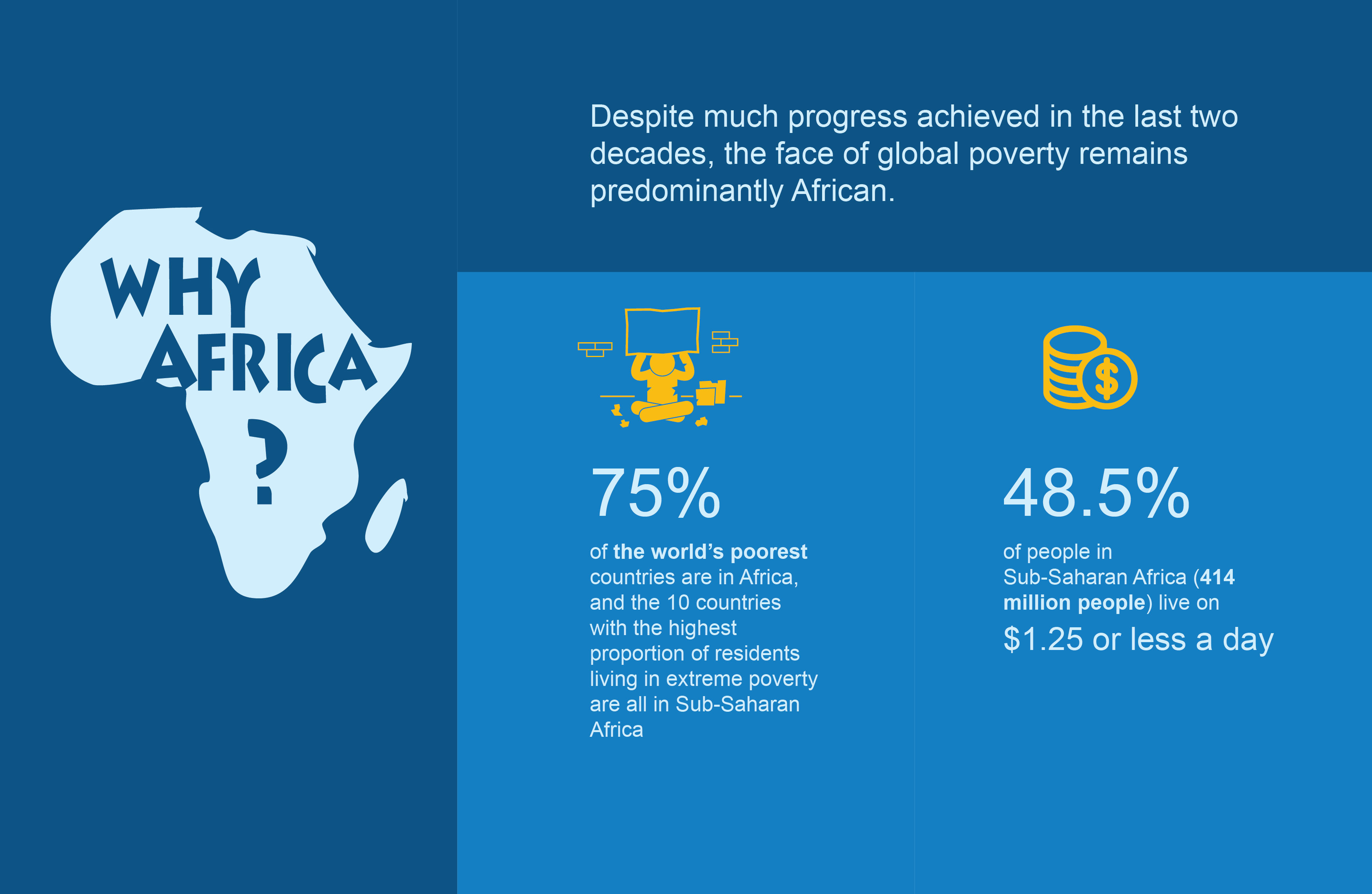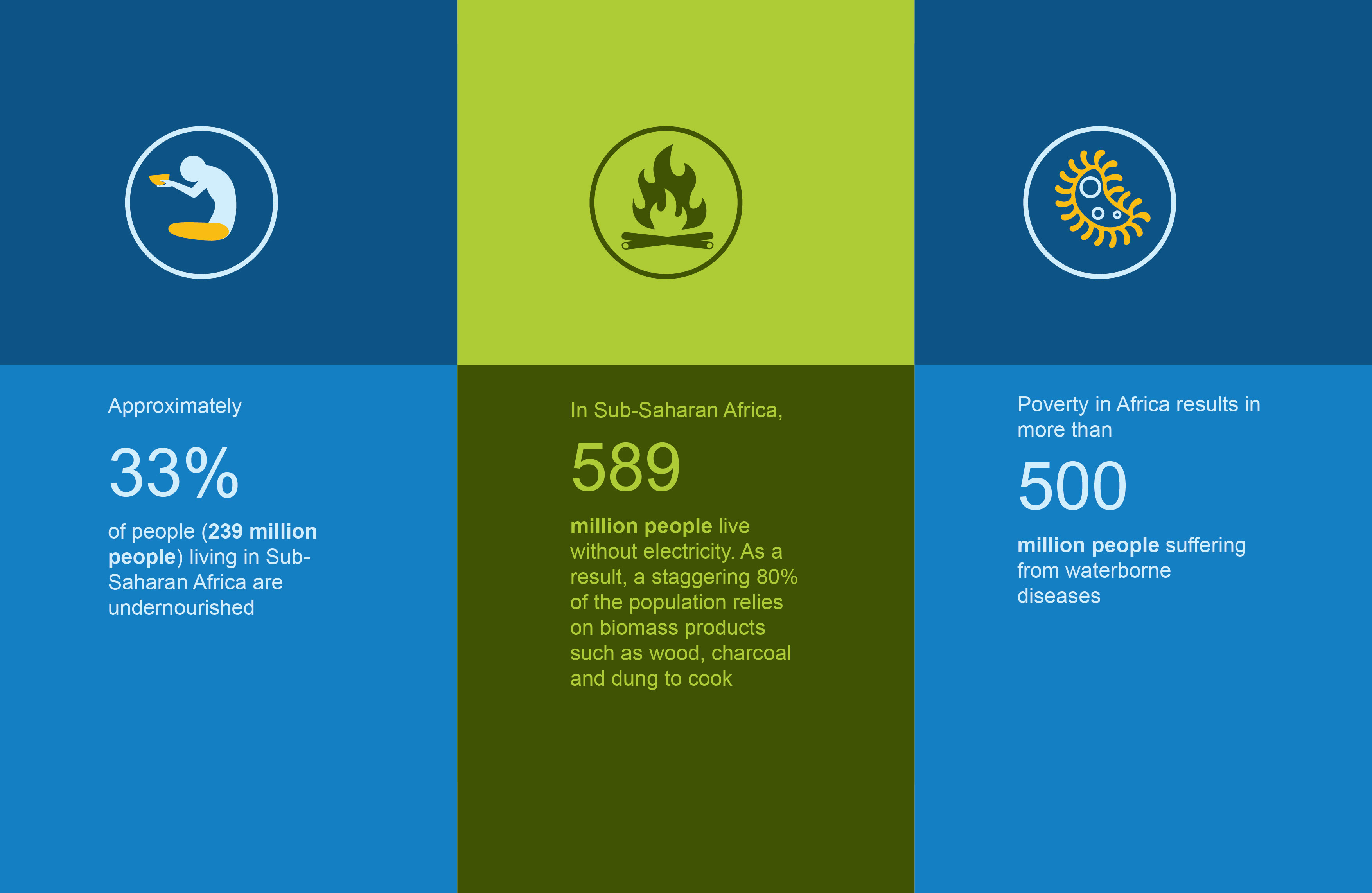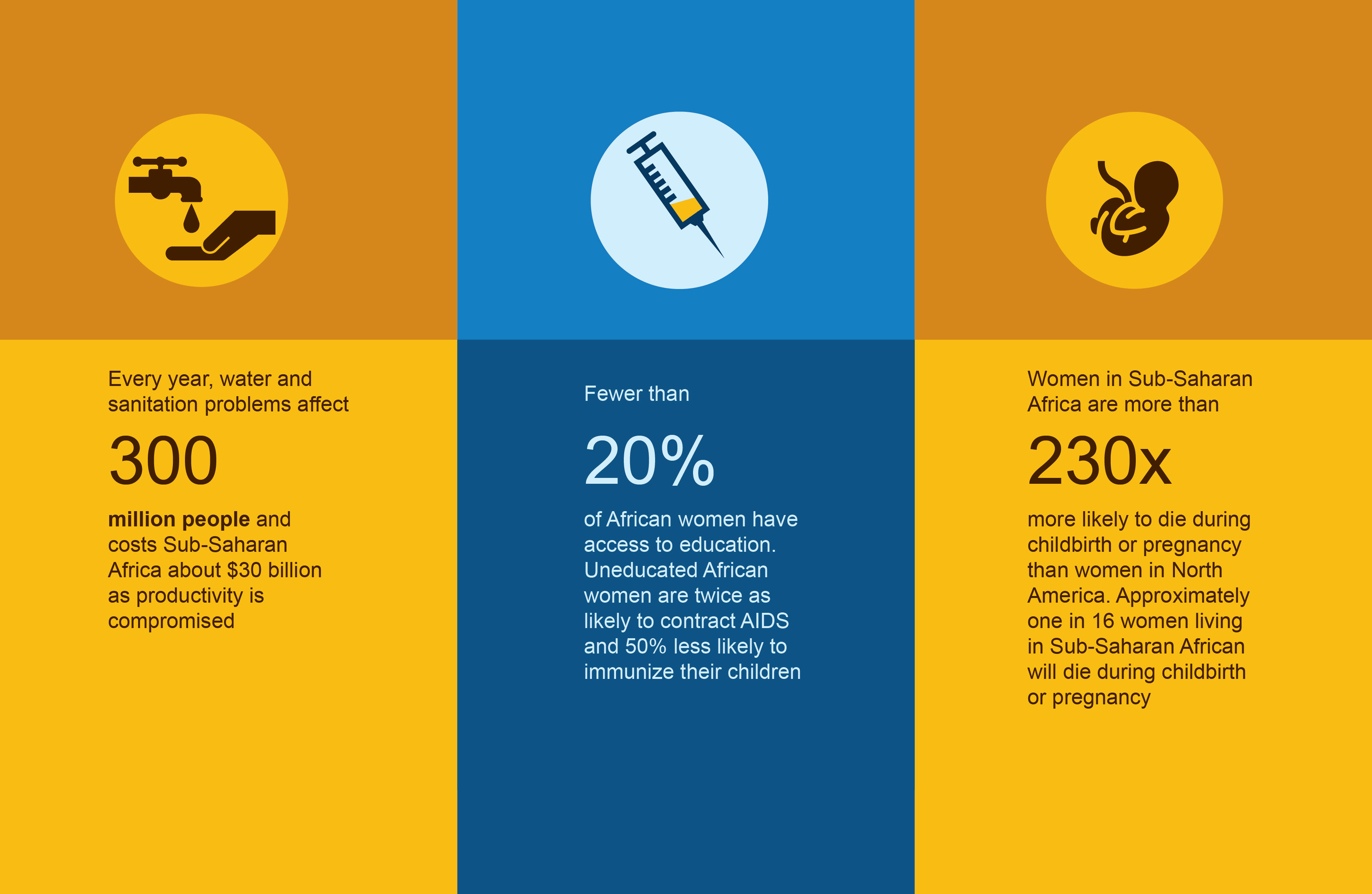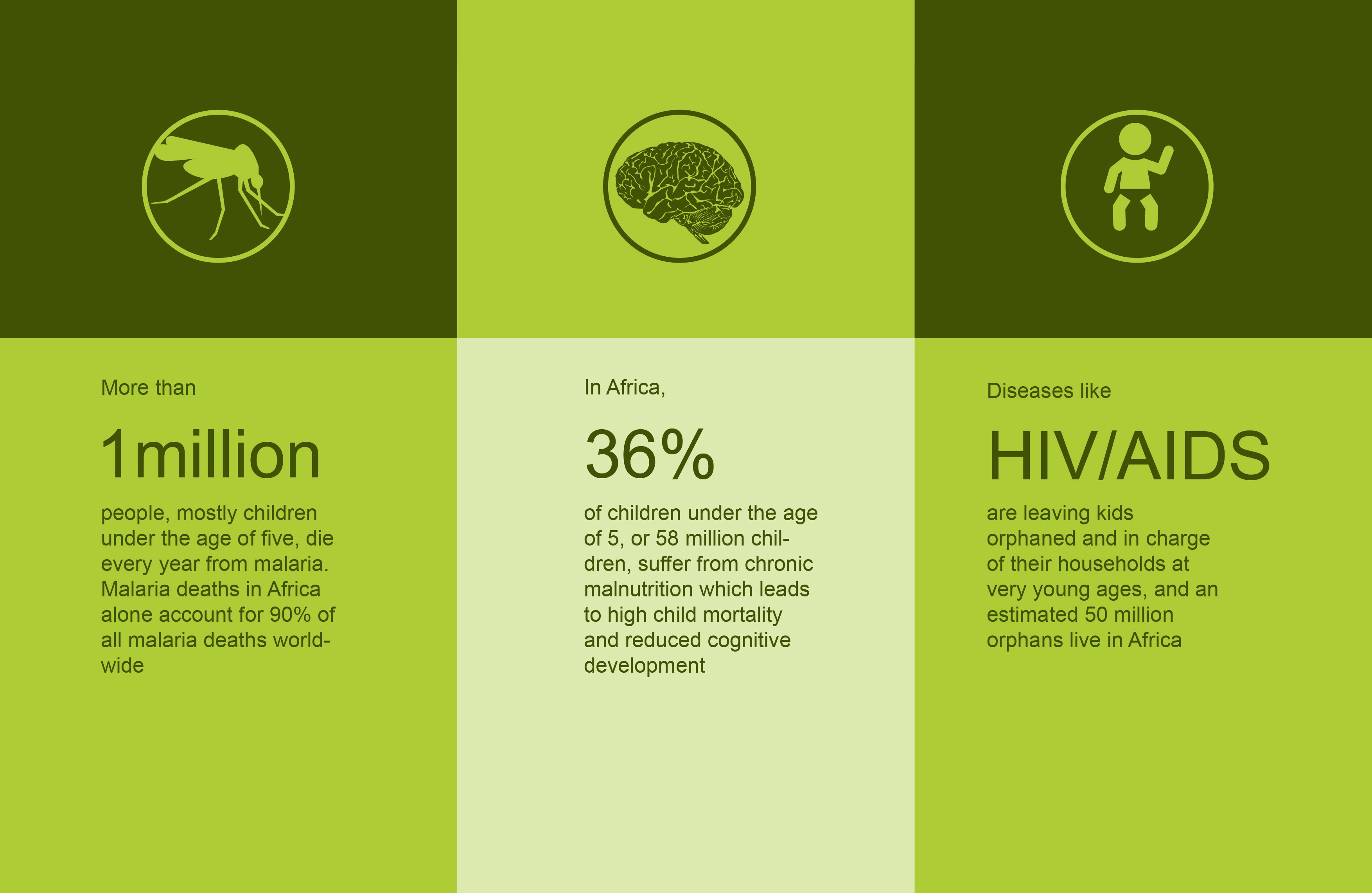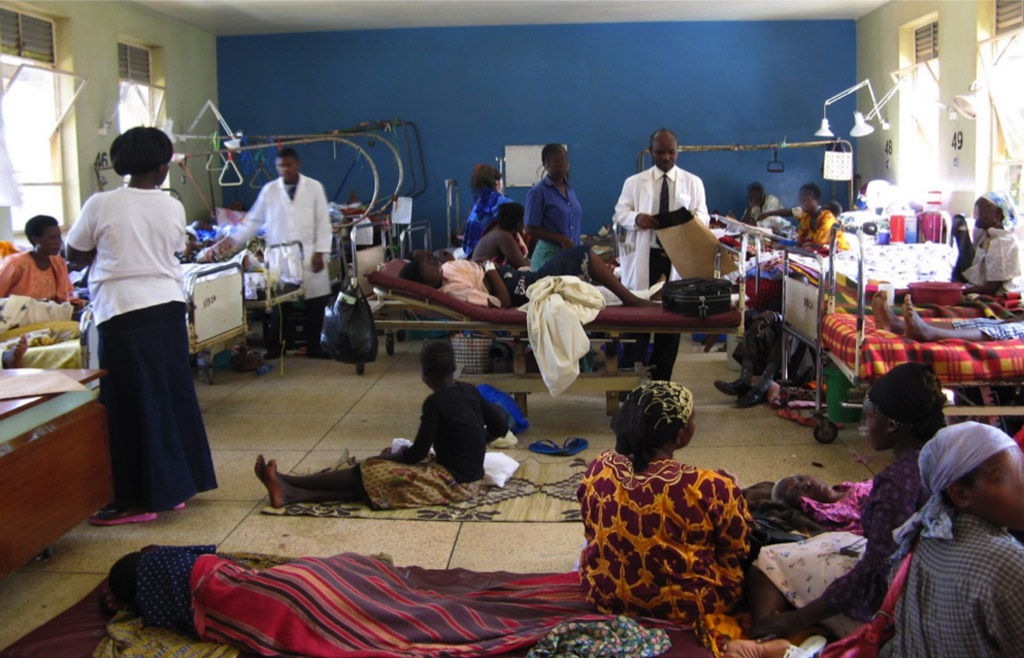Healthcare
Some of the issues affecting healthcare in Sub-Saharan Africa include lack of infrastructure, poor management of healthcare facilities, lack of essential equipment, shortages of drugs, affordability, accessibility and unqualified staffs.
Africa’s slow development has led to poor infrastructure, few hospitals and healthcare centers, which translates to high patient burden at hospitals that are supposed to be only referral hospitals. In most countries in Sub-Saharan Africa, patients walk dozens of kilometers searching for healthcare services. In addition to lack of equipped hospitals, there are also concerns over lack of capacity at healthcare centers to deal with smaller and sensitive issues like maternity. Lack of such basic infrastructure and facilities lead to poor service delivery, leading to preponderance in communicable diseases, and other preventable diseases, like cholera, dysentery and malaria.


